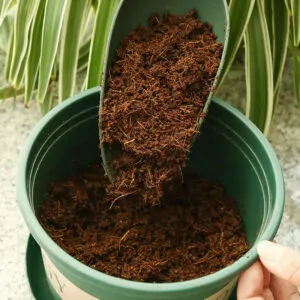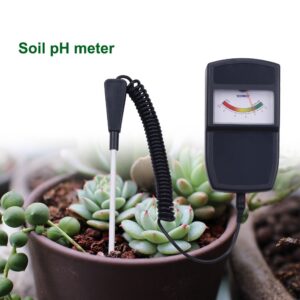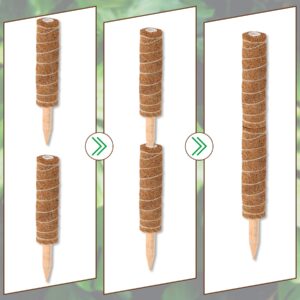Pothos plants are among the easiest houseplants to grow, making them perfect for beginners and seasoned plant lovers alike. With the right pothos plant care, you can enjoy lush, trailing vines and vibrant green leaves that add life to any room. In this guide, you’ll find everything you need to know to keep your pothos thriving effortlessly.
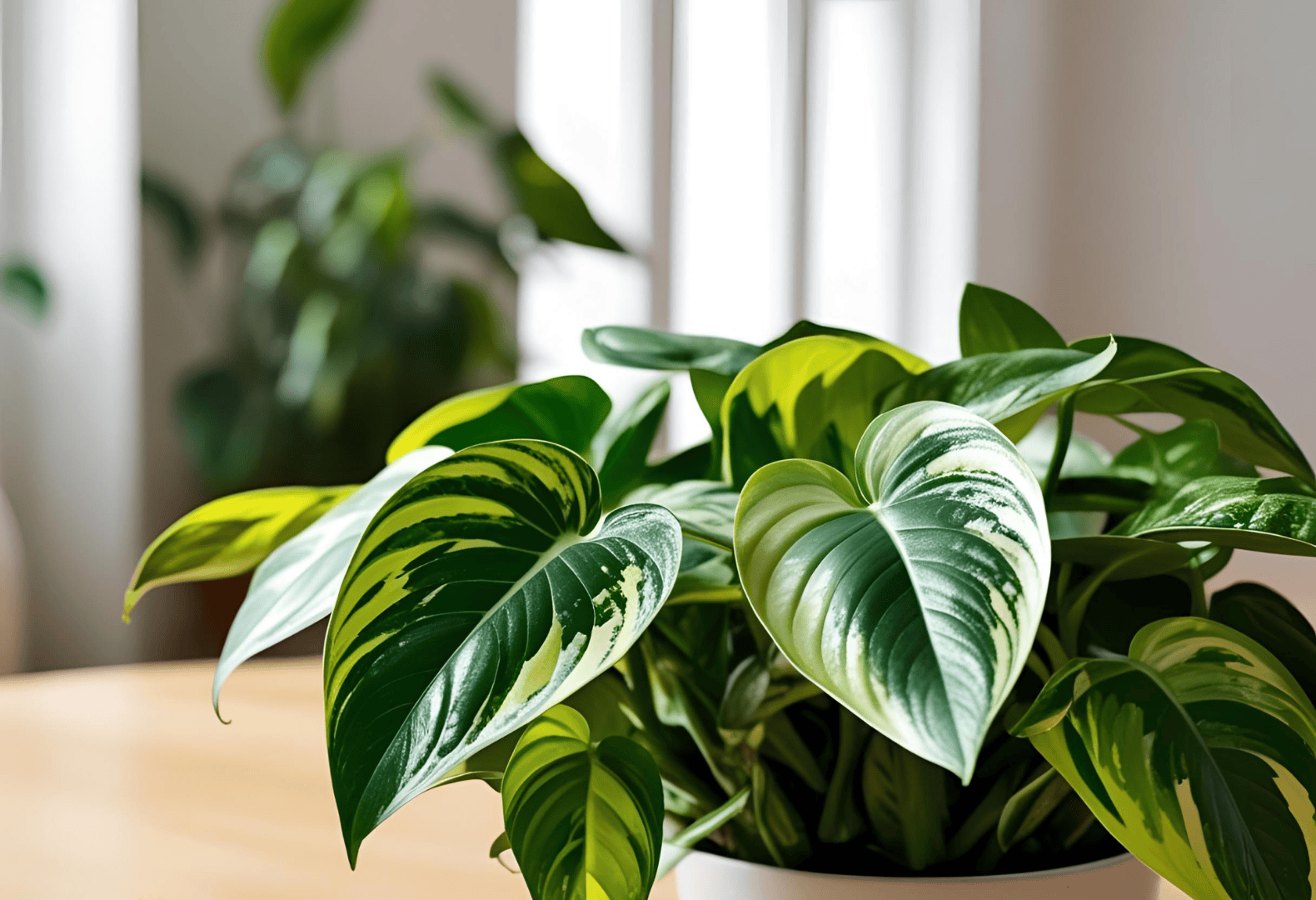
What is a Pothos Plant?
Pothos, also known as Epipremnum aureum, is a tropical vine native to Southeast Asia. It’s sometimes called Devil’s Ivy because it’s nearly impossible to kill! Its heart-shaped leaves can be green, golden, marble, or neon depending on the variety, and it grows beautifully whether trailing from a shelf or climbing up a moss pole.
Watering
Pothos is very forgiving when it comes to watering. Still, it has preferences.
Touch the top inch of soil — if it feels dry, it’s time to water. Always let the soil dry out between waterings to avoid root rot. In general, you’ll water more frequently during the spring and summer and less in fall and winter.
Signs that your pothos needs water:
- Drooping or wilting leaves
- Dry soil pulling away from the pot edges
Signs of overwatering:
- Yellowing leaves
- Mushy stems
Sunlight
Pothos loves light but doesn’t want to be baked by it.
Place your plant somewhere with bright, indirect light. Direct sun can scorch its leaves, while too little light can slow its growth and cause variegated varieties to lose their beautiful patterns.
Ideal light range: 500–2,000 Lux
You can measure light levels with a simple light meter — with our app, it’s easier than ever!
[(Healthy pothos near a window ‘resmi’)]
Tip: In very low light, pothos will survive but may grow leggy. For a full, bushy look, ensure it gets enough brightness.
Fertilization
To keep your pothos lush and healthy, feed it with a balanced houseplant fertilizer. Use a liquid fertilizer once every 4–6 weeks during the growing season.
In winter, when growth slows, you can skip fertilizing altogether.
Recommended Fertilizers:
- Balanced Liquid Fertilizer (NPK 20-20-20 or 10-10-10)
- Organic Options:
- Seaweed Extract
- Worm Casting Tea
Make sure to fertilize only when the soil is moist, not bone dry, to protect the roots.
-
All Products
Carnivorous Plant Food Liquid Soil Conditioner – MoonSpry Nutrient Drops for Venus Flytraps, Pitcher Plants, Sundews, Butterworts – 100ml
£19.99 Select options This product has multiple variants. The options may be chosen on the product page -
All Products
Coconut Brick for Potting Mix – Desalted and Nutrient-Rich for Optimal Plant Growth, High-Quality
£24.99 – £69.99 Select options This product has multiple variants. The options may be chosen on the product page -
All Products
Plant Nutrient Solution – Liquid Concentrate for Healthy and Fast Plant Growth
£14.08 Select options This product has multiple variants. The options may be chosen on the product page -
All Products
Soil Activator & Growth Powder – Organic Soil Enhancer for Healthier Plants
£24.99 Select options This product has multiple variants. The options may be chosen on the product page
Temperature & Humidity
Since pothos plants are tropical, they enjoy warmth and moisture.
Ideal temperature: 65–85°F (18–29°C)
Humidity preference: Moderate to high humidity (40%–70%)
If your indoor air is dry, especially in winter, use a humidifier or place a tray of water nearby.
Avoid placing pothos near drafts or heaters.
-
All Products
Plant Care Humidifier – Ultrasonic, Mute, Intelligent with Remote Control and Aromatherapy
£138.40 Select options This product has multiple variants. The options may be chosen on the product page -
All Products
Flame Effect Aromatherapy Humidifier – Ultrasonic Plant Care Device (250 ml)
£29.99 Select options This product has multiple variants. The options may be chosen on the product page -
All Products
Ultrasonic Aroma Diffuser with Colorful Night Light – Silent Essential Oil Diffuser with Remote Control
£76.50 – £83.61 Select options This product has multiple variants. The options may be chosen on the product page -
All Products
Portable Humidifier for Plants – Keep Your Greenery Healthy Anywhere
£28.87 Select options This product has multiple variants. The options may be chosen on the product page
Soil
Pothos isn’t picky about soil, but well-draining soil will make a big difference when it comes to Pothos Plant Care.
- Regular houseplant potting mix
- Added perlite or orchid bark for extra drainage
Good soil ensures roots stay healthy and allows for faster growth.
-
All Products
Soil pH Meter | Split Soil Tester – Soil Acidity, Moisture & Light Measurement Device
£44.99 Select options This product has multiple variants. The options may be chosen on the product page -
All Products
Wireless Soil Temperature and Humidity Sensor for Potting Soil – Gardening & Irrigation Monitoring Tool
£74.15 – £100.15 Select options This product has multiple variants. The options may be chosen on the product page
Pruning
Your pothos helps it stay bushy and healthy.
Snip off leggy stems or yellowing leaves with clean scissors.
You can also trim just above a node to encourage new vines to branch out.
Pruning Tip: Always sanitize your scissors before pruning to prevent disease spread.
-
All Products
Pruning Shears – Branch Cutting Tools for Gardening, Household & Fruit Tree Maintenance
£31.99 – £35.99 Select options This product has multiple variants. The options may be chosen on the product page -
All Products
Pruning Shears for Gardening – Heavy-Duty Manganese Steel Branch Cutter with Safety Lock
£22.99 Select options This product has multiple variants. The options may be chosen on the product page -
All Products
Stainless Steel Pruning Shears – Multifunctional Elbow Design for Efficient Branch Cutting
£19.99 – £29.99 Select options This product has multiple variants. The options may be chosen on the product page
Pests and Diseases
While pothos are hardy, they can occasionally face pests like:
- Spider mites
- Mealybugs
- Scale insects
You can wipe the leaves with a damp cloth regularly to keep pests at bay.
If an infestation happens, treat with insecticidal soap or neem oil spray.
Is It Toxic?
Yes, pothos is toxic to pets and humans if ingested.
It contains calcium oxalate crystals that can cause irritation or vomiting.
Keep it out of reach of curious cats, dogs, and small children.
Propagation
Want more pothos without buying new ones? Propagating is easy!
Cut a healthy stem with:
- At least one node (a bump where a leaf and aerial root emerge)
- Preferably 1–2 leaves
Place the cutting in water or moist soil.
Roots typically develop within 2–4 weeks. Watching roots grow in water is incredibly satisfying!
[(Pothos cutting rooting in glass jar ‘resmi’)]
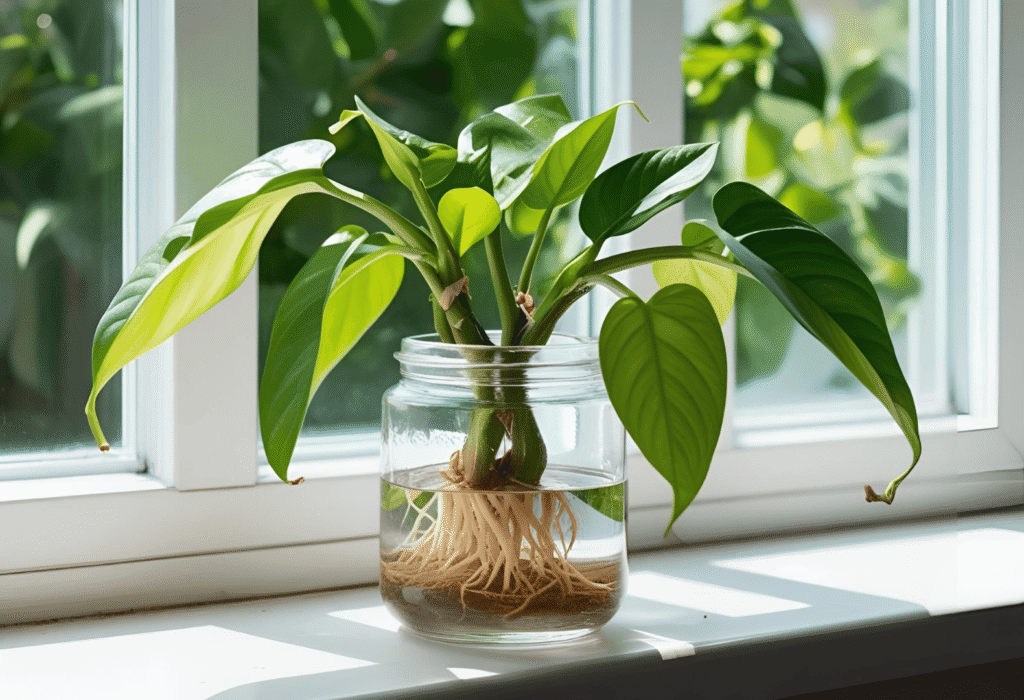
Pothos Plant General Care Tips
- Repot your pothos every 1–2 years or when roots start poking out of the drainage holes.
- Clean leaves occasionally with a damp cloth to remove dust.
- Use a moss pole if you want it to climb vertically.
- Rotate your plant every few weeks to ensure even growth on all sides.
-
All Products
Pruning Shears – Branch Cutting Tools for Gardening, Household & Fruit Tree Maintenance
£31.99 – £35.99 Select options This product has multiple variants. The options may be chosen on the product page
FAQ
How often should I water my pothos?
Generally, every 1–2 weeks. Let the soil dry out between waterings.
Why are my pothos leaves turning yellow?
Yellow leaves usually indicate overwatering, poor drainage, or sometimes low light.
Can pothos live in water permanently?
Yes! Pothos can thrive in just water, although growth might slow compared to soil-grown plants.
What’s the best way to make pothos grow faster?
Provide bright, indirect light, fertilize during the growing season, and prune regularly to encourage bushy growth.
External Reference
For more about houseplant care, check out this guide from University of Vermont Extension (University of Vermont, 2023).
Read More:
- What Is Pothos Plant? The Versatile and Resilient Indoor Vine – Explore why Pothos is a must-have indoor plant.
- How to Grow Pothos at Home: Stylish Tips for a Healthier Space – Grow Pothos easily with these helpful home-growing tips.
Plant Profile

Common Name

Plant Type

Mature Size

Sun Exposure

Soil Type

Soil pH

Bloom Time

Color

Hardiness Zones

Native Area

Humidity

Lighting

Temperature

Difficulty

Hibernation

Toxicity



